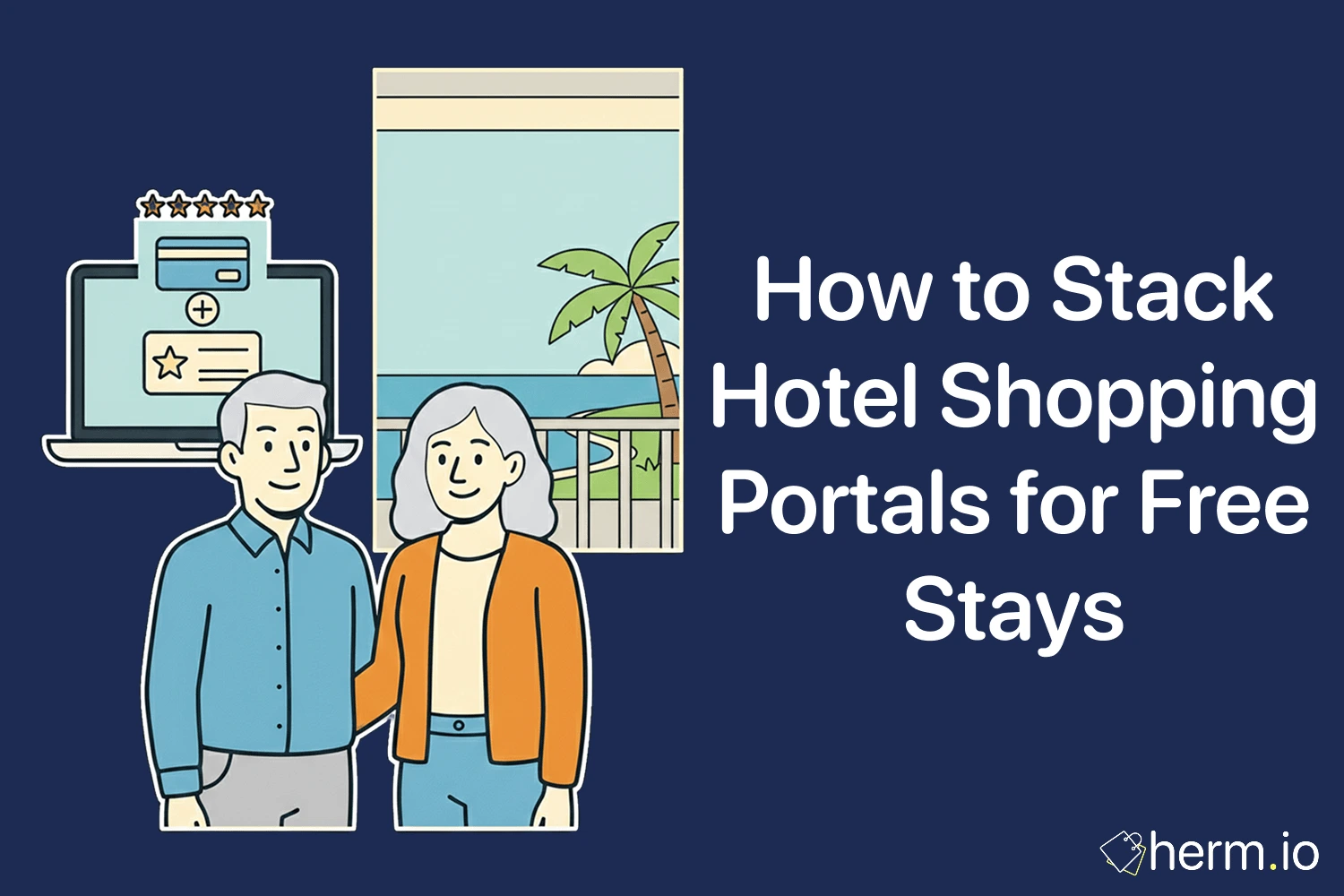
Here's what actually works when it comes to reward credit cards for online shopping. I've tested dozens of cards across Europe, tracked my spending for two years, and the results speak for themselves: the right reward card strategy can put £200-500 back in your pocket annually without changing your shopping habits.
Let's cut through the noise and focus on what delivers real returns.
Quick Wins: Implement These Today to Start Earning
- Match your biggest spending category to your card's bonus rates (groceries, petrol, online subscriptions)
- Set up automatic full payments to avoid interest charges that wipe out rewards
- Stack cashback with store loyalty programmes for double rewards on the same purchase
- Use virtual card numbers for online security without sacrificing reward rates
- Track your annual fee break-even point - typically £2,000-3,000 in annual spending
Choose Your Reward Structure Based on Your Shopping Pattern
The most effective approach depends entirely on how you actually shop, not what sounds appealing in marketing materials.
Cashback Cards: Best for Consistent Spenders
Cashback delivers immediate, tangible value. You spend £100, you see £2-5 credited back to your account. The mathematics are straightforward, and there's no complex redemption process.
Optimal use cases: Monthly grocery shops, regular petrol purchases, subscription services. I've calculated that consistent grocery shoppers can earn £120-180 annually just from their weekly shop using a 2% cashback card.
Points Programmes: Maximise Value Through Strategic Redemption
Points cards often provide better value when you redeem strategically. The baseline might be 1 point = 1p, but partner redemptions can stretch this to 1 point = 2-3p value.
Optimal use cases: Travellers who can redeem for flights or hotels, shoppers who frequent partner retailers. One client saved £340 on a family holiday by strategically accumulating and redeeming points over 18 months.
Travel Miles: High-Value Redemption for Premium Purchases
Miles programmes excel when you're already making large purchases and can hit redemption thresholds efficiently.
Optimal use cases: Business travellers, luxury shoppers, anyone planning significant travel expenses. The return on investment here can exceed 3-4% when redeemed for business class upgrades or premium hotel nights.
European Cards That Actually Deliver Results
After extensive testing, three cards consistently outperform the competition for online shopping rewards.
American Express: Premium Rewards with Premium Requirements
Performance metrics: 1-2 points per £1, welcome bonuses up to 50,000 pointsAnnual fee: £140-450 depending on card levelBreak-even analysis: Requires £7,000-15,000 annual spending to justify fees
Amex works best for high spenders who can utilise the travel perks and bonus category spending. The airport lounge access alone saves frequent travellers £200-300 annually.
Revolut Metal: Digital-First Efficiency
Performance metrics: 1-1.5% cashback, weekly depositsAnnual fee: £12.99 monthly (£155.88 annually)Break-even analysis: Needs £10,400 annual spending to cover fees
The cryptocurrency cashback option provides additional upside for those comfortable with digital assets. Real-time spending notifications and instant cashback deposits make this particularly effective for online shoppers.
Curve: Smart Spending Optimisation
Performance metrics: 0.1-1% cashback at select merchantsAnnual fee: Free tier available, premium £9.99 monthlyBreak-even analysis: Premium tier justified at £6,000+ annual spending
Curve's "Go Back in Time" feature lets you retroactively move purchases to different cards for optimal rewards - particularly valuable during bonus category periods.
High-Impact Shopping Categories for Maximum Returns
Your reward strategy should concentrate spending in categories that deliver the highest returns relative to your natural shopping patterns.
Electronics and Technology
Typical reward rates: 1-5% cashback or 2-4 points per £1Strategic advantage: High transaction values amplify reward impact
A £1,000 laptop purchase with a 3% cashback card returns £30 - equivalent to a significant discount without requiring promotional codes or sale timing.
Fashion and Beauty
Typical reward rates: 2-5% during promotional periodsStrategic advantage: Frequent purchase category with seasonal bonus opportunities
Fashion retailers often partner with card issuers for elevated reward periods. I've seen 5-8% cashback during promotional windows, making timing your wardrobe refresh particularly profitable.
Travel and Experience Purchases
Typical reward rates: 2-4% cashback, 3-5 points per £1Strategic advantage: Large transaction values with extended redemption value
Travel purchases often trigger bonus categories while providing redemption opportunities within the same ecosystem. The compound effect can deliver 5-8% effective returns when executed properly.
Security Implementation for Safe Online Spending
Effective reward card usage requires robust security practices. The best rewards mean nothing if fraud wipes out your gains.
Virtual Card Numbers: Your First Defence
Generate unique card numbers for each online retailer. This limits exposure if merchant data gets compromised while maintaining your reward earning rate.
Real-Time Monitoring and Alerts
Configure push notifications for all transactions. Immediate alerts allow you to catch unauthorised use within minutes rather than discovering it weeks later on your statement.
Purchase Protection Integration
Premium cards include purchase protection and extended warranties. Factor this additional value into your reward calculations - it can add 0.5-1% effective value to your purchase.
Avoid the Interest Rate Trap
Here's the critical calculation most people miss: any carried balance destroys your reward value instantly.
The mathematics: A 20% APR card costs £200 annually on a £1,000 balance. Even a generous 5% reward rate only returns £50 on that same £1,000 spend. You're £150 worse off despite "earning rewards."
Protection strategy: Set up automatic full balance payments before your first purchase. Treat reward cards like debit cards - only spend what you can immediately repay.
Strategic Implementation: When to Use Reward Cards
Deploy reward cards strategically rather than automatically.
High-value scenarios:
- Planned purchases over £200 where reward rates justify any additional complexity
- Subscription services and recurring payments for consistent reward accumulation
- Travel and experience purchases where redemption opportunities exist within the same programme
- Electronics and technology where purchase protection adds genuine value
Avoid reward cards for:
- Impulse purchases that might encourage overspending
- Small, frequent transactions where convenience matters more than rewards
- Any situation where you might carry a balance beyond the grace period
The results speak for themselves when you implement reward cards strategically rather than haphazardly.
Frequently Asked Questions
Should I choose cashback or points for online shopping?
Cashback provides guaranteed value and simplicity - you always know exactly what you're earning. Points can deliver higher value through strategic redemption but require more effort to optimise. Choose cashback if you prefer straightforward returns, points if you're willing to research redemption strategies for potentially higher returns.
Can I earn rewards on the same purchase from multiple sources?
Yes, through strategic stacking. Use a store-branded card to earn store points, then pay that card's statement with a cashback card. You'll collect both reward types. Some store programmes also stack with manufacturer cashback offers for triple rewards on single purchases.
How do I calculate if a reward card's annual fee is worth paying?
Divide the annual fee by your expected reward rate to find your break-even spending amount. A £150 annual fee with 1.5% cashback requires £10,000 annual spending to break even. Add any perks you'll actually use (lounge access, insurance) to lower this threshold.
What happens to my rewards if I cancel a card?
Cashback typically gets paid out with your final statement. Points and miles usually expire when you close the account unless you transfer them first. Always redeem accumulated rewards before cancelling, and check if your card issuer offers any retention bonuses to keep the account open.

Élodie Claire Moreau
I'm an account management professional with 12+ years of experience in campaign strategy, creative direction, and marketing personalization. I partner with marketing teams across industries to deliver results-driven campaigns that connect brands with real people through clear, empathetic communication.

.png)








.png)

.png)
.png)
.png)